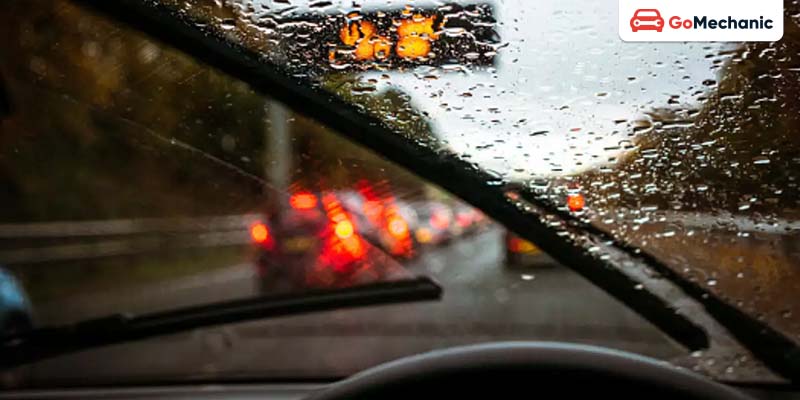The roads in India get affected by the rains in the monsoon Season. Water gets accumulated in the road undulations and potholes. Driving in such conditions requires a good amount of skills and concentration. The monsoon season in India witnesses a spike in road accidents. A driver needs to focus on their car’s conditions as well. They should follow some basic car safety tips that can help avoid accidents. Here are some safety tips to keep your car safe this monsoon season.
Beat the Monsoon: Car Care Tips
1. Tire Traction
Tires are the only component which are in contact with the road. They are very important in vehicle’s safety. Tires must carry enough tread to effectively shed water and channel it away from the tire’s section that is making contact with the road. This can prevent the car from aquaplaning. This increases the braking distance of the car on extremely wet surfaces.
A tire tread-wear indicator can be used to measure the tread depth. This can also be measured using a normal scale too. The optimum tread depth during rainy seasons should be between 8mm and 4mm. If the tread indicator indicates the tire is worn out, it’s time to change your tires. It is always recommended to carry a spare tire.
2. Ensuring Optimal Braking
It is very important for a car to stop at a shorter distance. Brakes and Tires come collectively handy in this situation. It’s important to get the brakes checked regularly. Brakes should be in their most effective condition during rainy seasons because wet surfaces negatively impact your braking distances.
To be able to calculate your braking distance well, ensure that your brake pads aren’t worn out and the master cylinder is functioning just right. To do that, you need to do the following steps
- Turn your car on, press the brake pedal while idling
- Gauge the distance traveled by the pedal
- If the distance is longer than usual/the brakes feel soft and spongy
- Make sure you get them serviced or replaced before you encounter rain
If you drive across waterlogged areas, make sure that you pump your brakes adequately enough to ensure that no residual water remains inside them. This is particularly important if you have drum brakes.
3. Maintaining Visibility with Effective Wipers

If the wiper blades are worn out they are less effective in countering the rain and wiping the water on your windshield. While this is still manageable under a drizzle, it can take a dangerous turn when the rain increases.
You must ensure that the blades haven’t been damaged during the summer and that the washers are working just fine.
4. Safeguarding Electrical System: Battery
It’s crucial to ensure that the battery and the car’s electric wiring are in good shape. More frequent use of headlamps, fog lamps, and wipers means your battery will be under a heavy load.
Heavy rains can also damage the insulation of the cables. You must ensure that the wires are well insulated.
You must always carry spare fuses.
5. Car Safety Tips while Driving Through Flooded Areas

If you must cross a waterlogged street, make sure that you do it while maintaining a steady throttle. Do not take your food off the throttle as doing so will allow water to enter the exhaust. This can damage your car. You should keep the engine RPM high and stick to lower gears. lift your foot off the throttle only after your vehicle is out of the flood.
If your car gets stalled in a flood, do not attempt to restart this engine. This might cause more damage to the electricals. Get the car pushed to a dry area and then get it towed.
If there’s a risk of your car getting flooded then you should not panic. Use as much force to open the doors and then get out. The water outside will exert pressure making it harder to open the doors. And if you are unable to open the door then break the window and get out. Keep things like seabed cutters handy for the absolute worst-case scenario.
Most importantly, ensure that you leave your car if the water logging levels increase. You will have a much easier time reaching dry ground than in your vehicle.
Car maintenance Encapsulated
Monsoon in India comes with a certain amount of problems with cars. It is always important to adhere to vehicle safety advice during rain. One needs to have a safety check of the car’s components to ensure the best performance in the rain. Tires, brakes, wipers, and batteries need to be in their perfect condition. One needs to follow all the car safety tips and not panic in the worst-case scenario.





